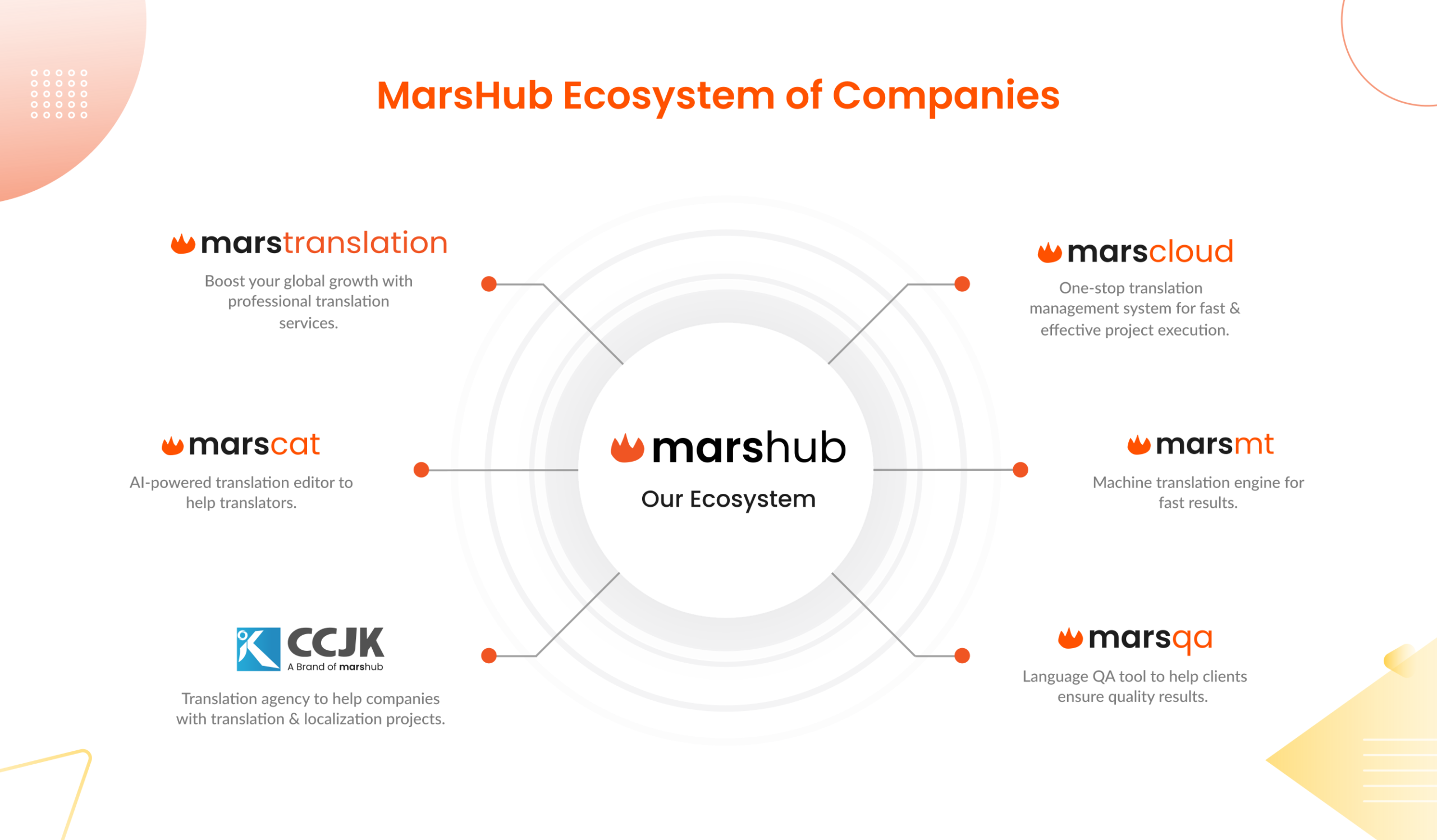If you are a global business, creating multilingual content for foreign customers is important to have a lasting impact on your customers. Soon or later, you’ll come across the question of building a multilingual brand presence to better connect with diversified audiences. Localization is becoming more important for international businesses to stay relevant to their customers.
Having your brand localized, not just gives you a competitive edge, but also makes it much easier for you to tap into foreign markets. Localization is the process of personalizing your product to the interests and preferences of target audiences that leads to the success of your brand internationally. So, whether it is a software, app, or website of your brand, it should be localized to maximize your reach and unleash the real potential of your brand. Read this article to learn more about the significance of localization and the future of localization technology.
Localization Management Technology – Introduction
Localization Management Technology can be any software, app, or system used to automate and organize localization operations. The increased need for localization has also raised the demand for powerful localization technology that supports businesses in handling their day-to-day localization needs. Localization management is now investing in equipping itself with the latest technology and tools that allow it to achieve desired outcomes cost-effectively and with more convenience. Localization management tools are used by LSPs and project managers to complete more work in less time. It also reduces the need for an excessive workforce because most of the work is managed by a machine.
Localization systems produced high-quality automated content in the fastest turnaround time possible. This way, it helps you manage your increasing content needs for different regions around the globe.
Why Is Localization Important?
English is indeed the most dominant language on the internet, but according to several pieces of research, many online users don’t understand the English language properly, or at all. Considering this fact, it is becoming more important for businesses to focus on the localization of their brands to connect with local customers. Localization is high in demand these days, and there has been a lot of discussion over localization management tools’ significance. More than anything else, localization is enabling international companies to foster real customer relationships.
When your content is culturally relevant, it helps you scale your business in that particular market. This means there will be more market share and revenue. With advanced localization technology, companies can promote effective communication between teams, and deadlines remain within schedules. Moreover, it helps you do better market positioning and get an edge over other competitors around.
Prominent Features of a Localization Management System
If you’re thinking of buying a professional localization management system, you must have the technical know-how about the features it contains. Following are some of the most useful features in localization software.
1. MT Tools
For companies operating in various locations, it is essential to produce localized content for each region. It means the more locations you’re targeting, the more content you need to translate regularly. It is going to take a lot of time with traditional translation management. Using advanced MT tools can make translation management job easy and agile for project managers. These tools allow you to generate automated translations in a matter of seconds – that too with minimal human intervention. Most translation tools support various language pairs, you can also customize the language pair support based on the regions you’re targeting.
2. Translation Memory
It is an important feature in your localization system that helps you generate translations faster and more efficiently. Translation memory is a sort of database where all of your previously approved translations are stored. Your localization system accesses those databases to look for references to generate new translations. If similar content has already been translated; your system would use it instead of creating new translations. It makes the overall translation process super agile. This also allows your system to develop an understanding of the preferred tone and style of your brand. So, if you generate translations using an MT tool, make sure it has a translation memory to enhance the overall efficiency.
3. Glossary
Just like translation memory, glossaries are also important to keep your brand voice consistent. It also reduces the time spent by translators or MT software to develop an understanding of your brand. It is like your brand vocabulary that contains all brand terminologies (that will remain unchanged), definitions, acronyms, etc. If multiple translators are working on the same translation project, there will be chances of inconsistency, and different tones and styles used throughout the translations. To avoid this from happening, you must create translation glossaries that give your localization teams an idea of what your brand sounds like. No matter how many languages you have translated your brand to, it still stands for the same things, and there is no change in your brand voice and persona.
4. QA System
Probably the most important features to look for when you’re handling your translations through technology. In the end, it is the quality of your content that matters the most when it comes to connecting with your customers. Having a QA tool in your localization system would ensure the quality of translations you have generated. It will ensure that your content is error-free and there are no mistakes in the translations. Not only that the QA tool detect and eliminate all potential mistakes from your translations, but it will also save the time required for proofreading and editing your translation documents.
5. Security Measures
Today, most localization systems run on cloud technology because of their higher flexibility and convenience. However, the threat of security is going to be higher when you’re using an online resource. The security measures your localization system takes to ensure the protection of data is important to consider. When it comes to performing security precautions, every system does it differently. Some might do it automatically, and some want users to do it manually. So, based on your convenience, you must choose a localization system with proper security measures to keep hackers and cybercriminals at bay.
6. File Storage
We know how challenging it is to manage your files in a traditional translation management system. There is so much manual work involved that makes it even more difficult to keep track of updated files and store them properly. With a cloud-based localization management system, it is much easier to store files and retrieve them whenever needed. In a cloud-based system, your data is automatically stored at a centralized location, where it can be accessible to all authorized team members. The system does all translation file management itself, unlike traditional manual file management. It also reduces the chances of redundant information by keeping only one version of translation files. Any duplicate data is detected and removed instantly.
7. Cloud Technology

It is an important thing to consider while looking for your perfect localization system. Server-based systems are too much of a headache. Not only are there limitations to their efficiency, but it requires a lot of effort and money to maintain server-based localization systems. Cloud technology, on the other hand, comes with a lot of convenience and flexibility. Moreover, it offers more transparency over localization projects, and project managers can always have a bird-eye view of the project. This way, things are kept under control, and managers can make informed decisions about the projects at hand.
8. Scalability
Localization tools not only help you enter into a new market but also help you scale your business in that market. You can customize your localization system specifications anytime you want, as your business’s needs change. With professional localization tools, you can easily adapt your systems to changing business requirements and smoothly thrive in international markets. So, you better choose your localization system keeping the future growth of your business in mind.
Current State of Localization
Localization technology has been around for a while now. However, after the pandemic, there has been a significant increase in the demand for localization systems with more businesses hitting global markets. You can see different localization technologies around, helping businesses take their brand to international markets. These tools primarily focus on translating the content into multiple foreign languages, keeping the whole process simple and agile. Below are some in-demand localization technologies.
1. CAT Systems
These are the systems used to generate and manage brand translations for multiple regions. Using these tools, you can improve the consistency of your translations, keeping the delivery times shorter. It allows you to manage higher volumes of translation content – that too in the fastest turnaround time. Moreover, the advanced tools ensure high-quality content saving your cost and resources. Whether you are an individual translator, an LSP, or a global business, having a CAT tool would help you streamline your translation workflow and optimize your everyday translation operations.
2. AI Technology
The use of artificial intelligence is increasing in TMS, CAT, and other types of localization tools. Powerful algorithms of AI reduce your dependency on human translators. MT tools also use AI technology, and over the past few years, their demand has significantly increased. AI innovations in the localization industry are making things exciting and development is becoming more rapid. AI technology in localization not only improves the overall speed and accuracy of your translations but also aids your translators to achieve better results by putting in relatively less effort.
3. CX and WX Digitization
With the digital-first approach, more brands are focusing on their WX (workforce experience) and CX (customer experience) more than anything else. It means digitization is going to play a major role in defining how employees work and customers perceive a product. Localization technology simply helps businesses shift to the CX and WX digital providing both their employees and customers a more personalized online experience. Localization leads to better online communication that builds the trust of customers in a company and makes digital workplaces more interactive and inclusive.
Future of the Localization Industry
The localization industry is thriving rapidly, which gives a green signal to localization technology in the future. Following are some major changes that you can expect to see in the localization technology.
1. Multimarket Digital Experience
After 2020, businesses realized the importance of digitization for their brand. It raises the need to localize digital content to give a more personalized experience to customers. Companies need to build multilingual brand experiences to provide a frictionless online experience to their customers. There is more need for innovation to be done on digital localization for businesses that are moving forward with the digital-first approach.
2. Augmented Translations/ Localization
We have seen the use of AI in machine translation technology over the years. In the future, AI technology in the translation sector is going to evolve based on how translators will go about their everyday tasks in the future. The augmented machine-generated translations are on the cards that are going to transform the translation industry. The purpose of this technology would be to fill the cultural, linguistic, and market gaps in translations. Augmented translation tools will improve the overall translation efficiency and support the translators to achieve desired results more effortlessly. This technology will also help improve the quality of translations. So, it seems like the influence of AI in the translation generation section is going to be huge shortly.
3. Marketing Merges Localization
In the future, marketing and localization operations will go hand in hand. Although the purpose of both departments is almost the same, businesses can achieve greater results by merging localization with marketing. Marketing, in the future, is going to master the art of multilingual, and multicultural content to better connect with customers. Some organizations have already realized the need for a collaborative effort from both the marketing and localization departments. So, you may see more multilingual marketing strategies coming up that will augment the overall customer experience with a brand.
Conclusion
The localization technology has evolved significantly, reflecting its critical role in a globalized world. As discussed in this article, the key features of a Localization Management System, from MT tools to security measures and scalability, highlight the efficiency and accuracy this technology brings to the localization process. With current trends like CAT systems, AI integration, and digitization of customer and worker experiences, the industry is rapidly adapting to meet the evolving demands of a tech-savvy, multicultural audience.
The future of localization technology is bright, with new developments such as augmented translations and localization, and the merging of marketing and localization, promising to revolutionize the way businesses reach and engage global audiences.



